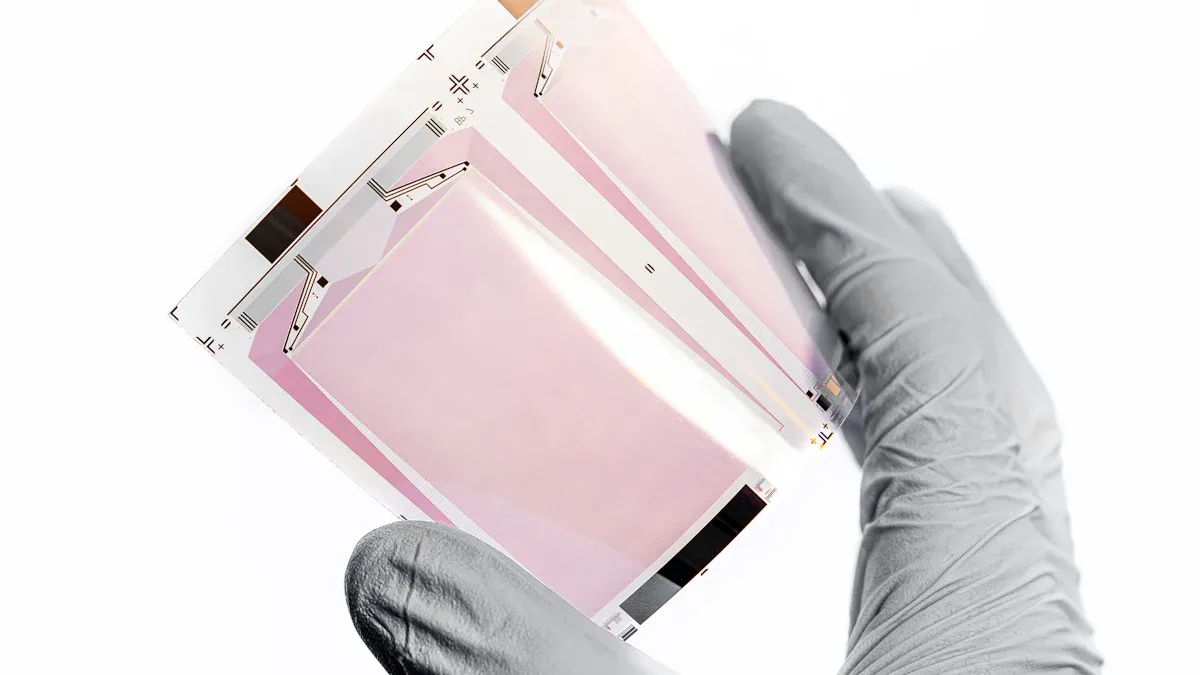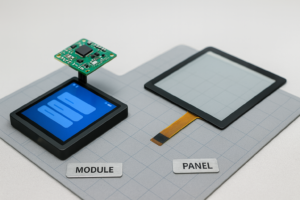In 2025, flexible and ultra-thin capacitive touch screens are changing how people use technology. Market data shows strong growth:
- The capacitive touch panel market may reach $27.4 billion by 2032. This is because more people use smartphones, tablets, and IoT devices.
- Manufacturers now work on sensors that are high-performing, ultra-thin, and flexible. These sensors are used in wearables, medical devices, and smart surfaces.
- Retail and automotive industries are using these screens quickly. Features like gesture recognition and multi-touch make the user experience better.
These new changes are shaping how devices look and work. People now expect more from interactive displays.
Key Takeaways
- Flexible and ultra-thin capacitive touch screens are becoming popular. They are changing how we use phones, cars, and medical tools.
- New materials and technology help these screens bend. They are also thin and strong. This makes using them better with things like multi-touch and gesture control.
- Asia-Pacific is the leader in this market. There are many factories and government help there. This helps make new ideas and more products.
- There are problems like making screens last longer and keeping costs low. Supply chain issues are also a problem. But companies are working hard to fix these with better designs and materials.
- The future looks good for these touch screens. They will be smarter, better for the environment, and save energy. Many industries will use them soon.
Market Trends
Growth Drivers
Many things help flexible and ultra-thin touch screens grow fast. Companies spend money on new technology. They want to give people better ways to use devices. The global capacitive touch screen market could grow 9.3% each year from 2024 to 2034. It might reach almost $39 billion by 2034. This growth happens for many reasons:
- People want devices that are easy to use.
- New features like multi-touch and gesture recognition attract users.
- Curved and foldable screens are also popular.
- Bezel-less and edge-to-edge displays need ultra-thin sensors.
- Foldable and flexible panels let designers make new kinds of devices.
- Capacitive touch screens are faster and last longer than old resistive screens.
- Better touch controller chips and new ways to make screens help a lot.
- Automation and smart control systems use more touch technology now.
Innovation is very important. The market for touch sensor chips could grow from $5 billion in 2025 to $12 billion by 2033. Companies work to make sensors more sensitive and use less power. They also add new features like multi-touch and noise reduction. These changes help both people and businesses.
Industry Demand
More industries want flexible and ultra-thin touch screens. The market was worth $18 billion in 2024. It could reach $120 billion by 2032. This means it could grow 25% each year. The table below shows some key facts:
| Metric | Statistic | Details |
|---|---|---|
| Projected Market Size (2032) | USD 120 Billion | Expected value by 2032 |
| CAGR (2024-2032) | 25% | Fast annual growth rate |
| Foldable LCD Touch Screen Launches | >50% | Driven by demand for foldable phones and wearables |
| Production Capacity Expansion (2023-2024) | >75% | Companies increase output to meet demand |
| R&D Budget for New Materials | >45% | Focus on durability and performance |
| Smart Home Devices with Touch Interfaces | >70% | Expanding use in consumer electronics |
Automotive, healthcare, and smart home companies use these screens the most. Manufacturers use new materials and coatings to make screens stronger. They want to make screens last longer and work better. Thinner, more flexible, and tougher screens will change many industries in the future.
Capacitive Touch Screen Advancements
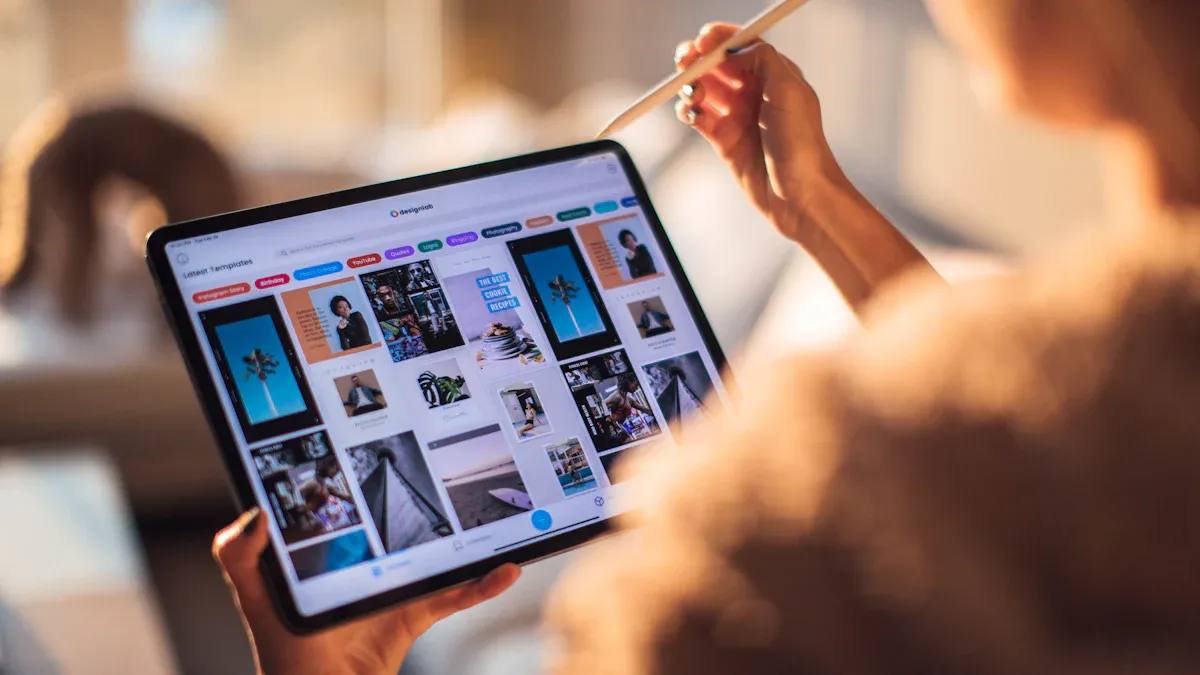
Flexible Displays
Flexible displays have changed how people design and use devices. Companies use new materials like flexible OLED and special plastics. These materials help make screens that can bend, fold, or roll up. Manufacturers use roll-to-roll printing and thin-film transistors. This helps them build screens that are thin and strong.
Samsung is a leader in making AMOLED and flexible displays. LG has made see-through OLED panels that can bend. These new ideas help make foldable phones, curved monitors, and wearables.
A recent report shows more people use flexible and foldable touch screens. There was a 30% increase because foldable phones and laptops are popular. Asia-Pacific is ahead in this trend. This is because they have many factories and government help. Companies also try to make production cheaper and faster.
| Aspect | Data / Trend |
|---|---|
| Market growth in flexible/foldable touch screens | 30% more people use them because of foldable phones and laptops |
| R&D investment increase | 25% more money spent on new touch technologies |
| Automotive sector growth | 15% more touch systems in cars each year; 70% of new cars have them |
| Healthcare sector growth | 20% more touch medical devices used |
| Regional growth | Asia-Pacific leads with many factories and government help |
| Production cost reduction | 18% lower costs because of better ways to make screens |
Manufacturers now look for eco-friendly materials and new coatings. These changes help flexible displays last longer and work better in many places.
Ultra-Thin Sensors
Ultra-thin sensors make devices lighter and easier to use. Companies use nanocomposite materials like metallic thin films, carbon nanotubes, and metal nanowires. These materials let sensors be printed right onto flexible surfaces. This helps make touch screens smaller.
| Metric | Value | Relevance to Miniaturization Trend |
|---|---|---|
| Market Size (2024) | USD 6,318 million | Shows how big the ultra-thin glass market is for small sensors |
| Projected Market Size (2032) | USD 17,095.63 million | Shows fast growth in thin materials for sensors |
| CAGR (2024-2032) | 13.25% | Shows the market for thin, flexible sensors is growing |
| Ultra-thin Glass Thickness | Below 1 mm | Shows how thin the glass is for small sensors |
| Regional Market Share (Asia Pacific, 2024) | 73% | Shows Asia-Pacific is a leader in making sensors |
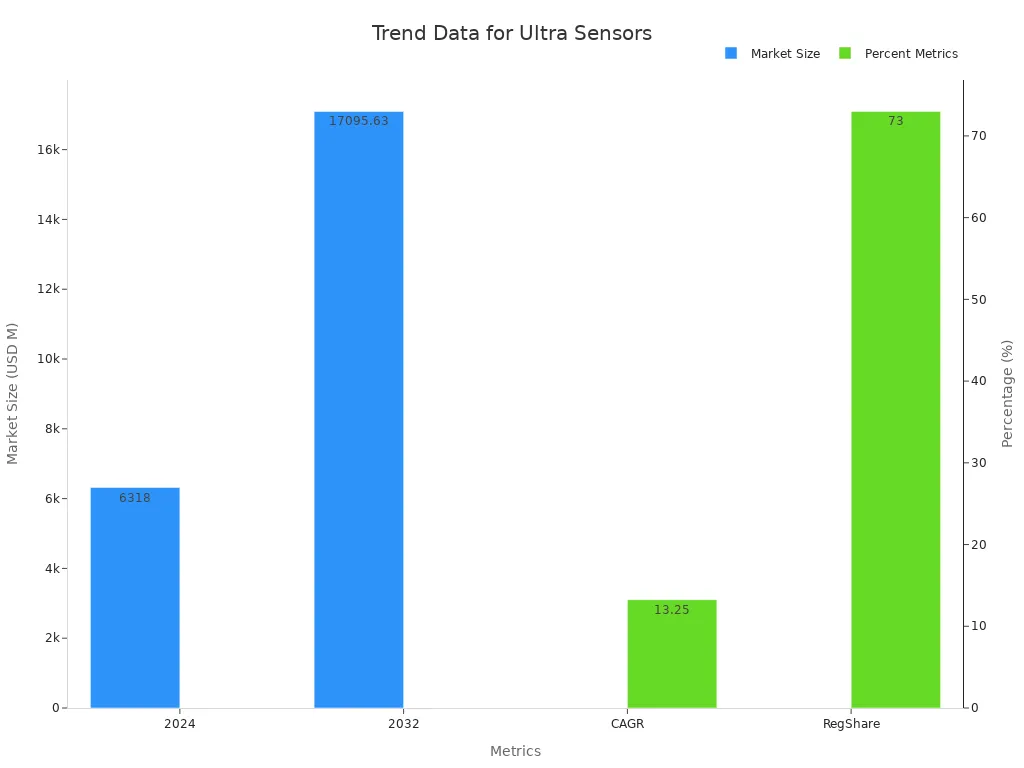
Hybrid sensor designs now use piezoelectric and triboelectric effects. These features help sensors feel pressure, temperature, and touch very well. Thinner and more flexible sensors help the capacitive touch screen market grow.
In-Cell and On-Cell Tech
On-cell technology puts the sensor on top of the display. Both ways make screens thinner and improve touch accuracy.
The global touch screen controller market is growing quickly. Asia-Pacific, especially China, is leading because of many factories and high demand for electronics. In 2023, capacitive touch technology had 41% of the multi-touch screen market. Smartphones using these technologies made up 54% of the market.
In-cell and on-cell tech help companies make thinner, lighter, and cheaper devices. These advances help make bezel-less and edge-to-edge displays.
AI and Haptics
Artificial intelligence and haptic feedback have made capacitive touch screens better. AI helps screens know gestures, learn user habits, and guess when repairs are needed. Haptic technology uses vibrations or small moves to let users feel touch.
Market research says the global haptic touchscreen market was USD 10.12 billion in 2023. Experts think it will grow to USD 22.03 billion by 2031. This growth comes from piezoelectric and electrostatic actuation. These make touch screens more fun and real to use.
The global touch screen display market was worth USD 60.03 billion in 2023. It should grow by 13.18% each year until 2029. This is because people want easy and interactive screens in phones, tablets, wearables, and cars.
AI and haptic feedback make capacitive touch screens more fun and easy to use. These features help people use devices in new and cool ways.
Applications
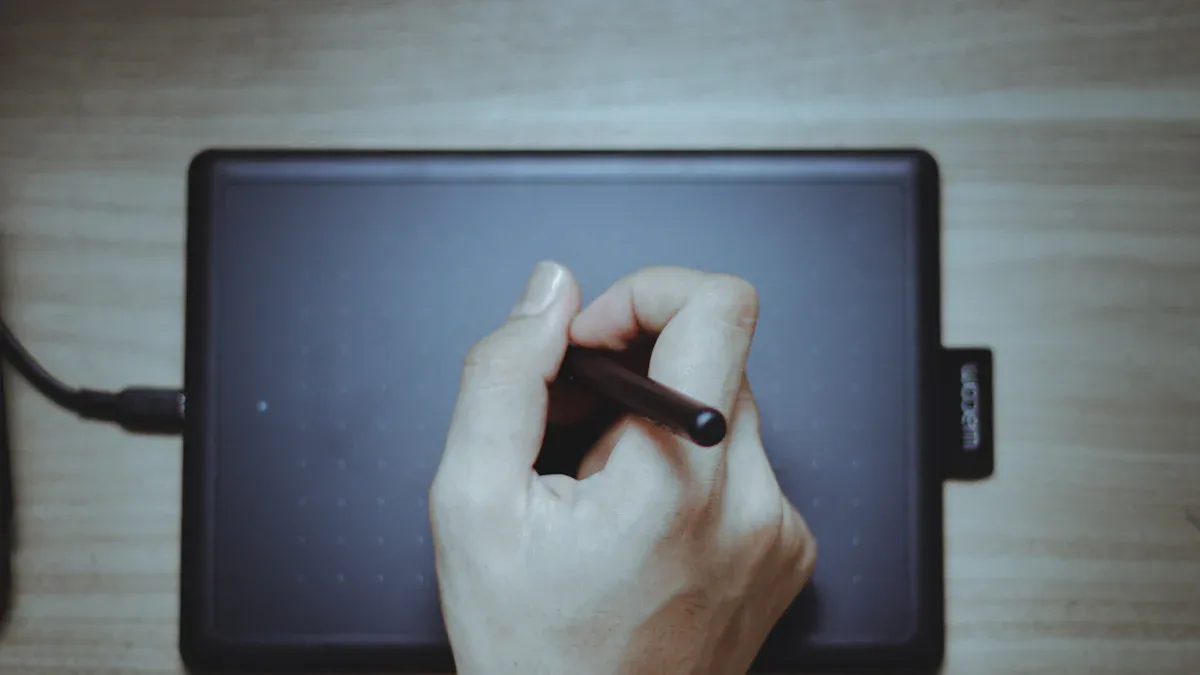
Consumer Electronics
Flexible and ultra-thin touch screens have changed how people use devices like smartphones and tablets. Big companies such as Samsung, Apple, and LG Display are leading this change. They use OLED technology to make screens that are bright, thin, and can bend. In 2024, the Asia-Pacific region made over 40% of the money from flexible electronics. China, Japan, and South Korea are growing fast in this area. People want devices that look cool, feel light, and are simple to use. Multi-touch and gesture features let people zoom, swipe, and tap easily.
| Category | Examples/Details |
|---|---|
| Major Companies | Samsung, Apple, LG Display, BOE Technology, AU Optronics, Sharp |
| Specific Products | Samsung Galaxy S21, Apple iPad Pro, foldable smartphones, smartwatches |
| Regional Growth | Asia-Pacific leads with companies like Xiaomi, Lenovo, ASUS, Acer |
| Market Trends | Over 45% of flexible electronics market in consumer electronics in 2024 |
Foldable phones and tablets now have big screens but still fit in small pockets. Wearables use curved screens to look good and feel comfortable.
Automotive
Car makers use flexible touch screens to make dashboards and controls better. VW and Audi put backlit touch panels in cars like the VW ID3 and Audi e-tron. Continental Corporation got a big order for flexible OLED displays, showing high demand. Printed and in-mold electronics with touch features are now in steering wheels and center consoles. These screens help drivers change music, maps, and climate with simple moves.
- Flexible displays now use foldable plastics instead of glass.
- Research teams work on new materials for safer and better designs.
- The car industry is a leader in flexible hybrid electronics.
Touch screens in cars help drivers stay safe and have more fun. Drivers can use bigger screens and multi-touch controls without looking away.
Healthcare
Hospitals and clinics use touch screens in many devices. Patient monitors, check-in kiosks, and diagnostic tools all use touch panels. These screens are easy to clean and help keep things sterile. In hospital ICUs, touch panels on monitors help nurses and doctors respond 30% faster. Clinics use self-check-in screens, which help people be on time for appointments 25% more often. Doctors and nurses can get records quickly and safely.
| Healthcare Setting | Application of Touch Screens | Measurable Impact |
|---|---|---|
| Hospital ICU | Patient monitoring devices | 30% faster response time |
| Clinic Waiting Area | Self-service check-in | 25% better punctuality |
Touch screens help medical staff work faster and keep patients safe. Patients can also use panels to see their care plans.
Industrial Uses
Factories and warehouses use touch screens for control panels and data displays. The market was worth $6.2 billion in 2024 and could double by 2033. These screens work well in places with dust, heat, or shaking. Companies use them to control machines, track inventory, and see data right away. AI helps with fixing machines before they break and making work better.
| Aspect | Details |
|---|---|
| Market Size 2024 | USD 6.2 Billion |
| Projected Size 2033 | USD 12.4 Billion |
| Key Drivers | Automation, real-time data, user-friendly design |
| Environmental Durability | Rugged, IP-rated, withstand harsh conditions |
Industrial touch screens help factories work better and safer. They last longer and use less energy, which saves money.
Challenges
Durability
Flexible and ultra-thin touch screens have many problems with lasting a long time. Phones that fold or bend need screens that can bend over and over. These screens should not break when used a lot. Companies use new materials to make screens stronger and harder to scratch. But some problems still happen.
- Ultra-thin panels sometimes do not sense touch the right way. This can cause ghost touches, especially when using more than one finger.
- A computer study showed that if the top layer is too thin, the screen may not work well. The layer should be thicker than 107 micrometers to work right. If the pattern of the electrodes is changed, the layer can be as thin as 65 micrometers.
- Screens can pick up electrical noise. This makes it hard for the screen to sense touch in places like factories.
- Using gloves or wet hands can make the screen not work well. Some fixes are out there, but they cost more money.
Note: Foldable and curved screens need better materials and smarter designs.
Cost Factors
High prices make it hard to use these touch screens in cheap devices. Many things make the price go up:
- Making flexible and ultra-thin panels costs a lot.
- The price of raw materials like indium tin oxide changes a lot. This makes it hard for companies to set prices.
- Adding things like fingerprint sensors and haptic feedback costs more to make.
- Companies must spend money on research to keep up with new tech.
- It is hard to compete with cheaper resistive screens.
| Cost Driver | Impact on Market |
|---|---|
| High manufacturing costs | Limits use in budget devices |
| Raw material price changes | Makes pricing difficult |
| Advanced features | Raises production costs |
| R&D investment | Needed for innovation |
Supply Chain
The supply chain for flexible touch screens is hard to manage. Companies need special materials like indium tin oxide and special plastics. These can be hard to find, especially if there are global problems or tariffs go up.
- Tariffs planned for 2025 may make it cost more to make screens.
- Companies look for more suppliers in Asia and the Americas to avoid running out.
- Some companies move parts of making screens closer to home to lower risks.
- New ways to make screens, like roll-to-roll coating and digital printing, help save money and make screens better.
- High demand from cars, hospitals, and defense puts more pressure on supply chains.
Companies spend money on new materials and machines to make supply chains stronger and easier to manage.
Future of Capacitive Touch Screen
Market Outlook
The future for touch screen technology looks bright. Experts think the market will keep growing for years. More people use touch screens in phones, cars, and factories. Asia-Pacific, with China, South Korea, and Taiwan, leads in making these screens.
| Aspect | Details |
|---|---|
| Market Value 2025 | Estimated between $60 billion and $70 billion |
| CAGR (2025-2033) | Approximately 8% |
| Market Value 2033 Projection | Potentially exceeding $150 billion |
| Key Growth Drivers | Smartphones, tablets, automotive, industrial uses |
| Regional Dominance | Asia-Pacific (China, South Korea, Taiwan) |
| Product Trends | Larger, thinner, flexible, energy-efficient screens |
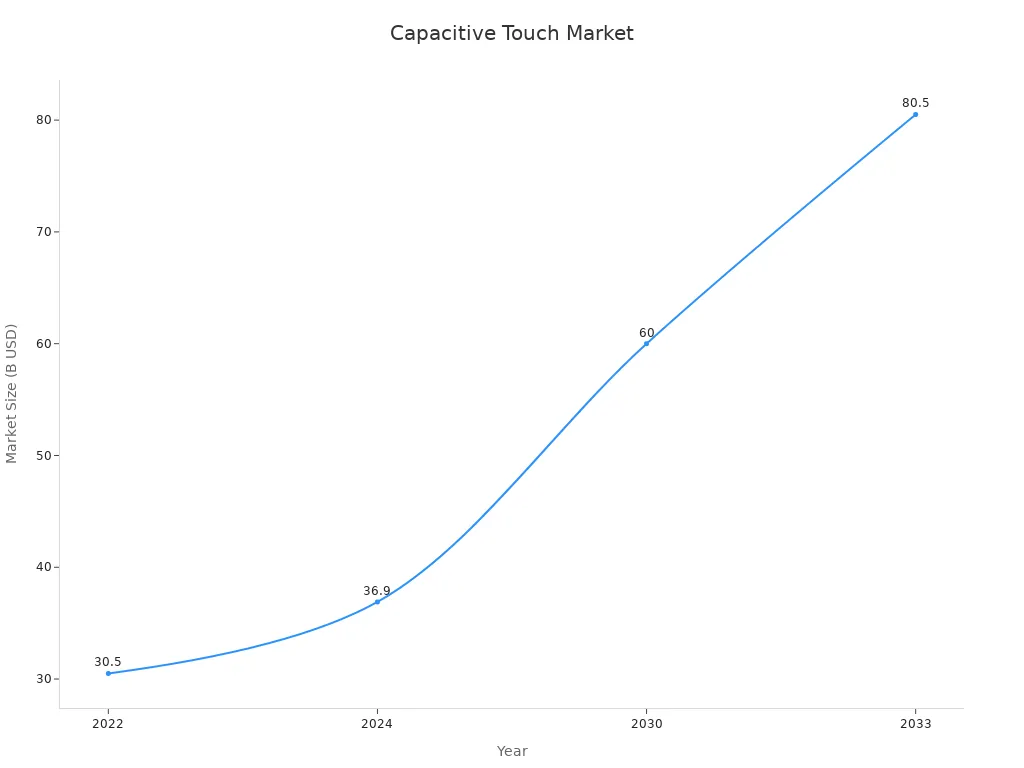
Asia-Pacific has about 55% of the market. North America has 25%, and Europe has 18%. Growth comes from new uses in cars, smart homes, and factories.
Emerging Features
New features will change touch screens soon. Companies work on screens that bend, curve, and save energy. Flexible and curved displays are now in phones and car dashboards. Touch screens react faster and work well in bright light.
Studies show people want screens that last and do not scratch. Stores and hospitals need panels that do not glare and can be used a lot. More smart devices mean more screens will connect to the Internet of Things (IoT). This lets people control many things with one touch.
Experts think touch screens will use less energy and get smarter. Multi-touch, stronger screens, and better touch response will help in busy places like malls and airports.
Industry leaders also try to use eco-friendly materials. They want to lower costs and help the environment. The capacitive touch screen market will keep growing as these features become normal.
Flexible and ultra-thin touch screens are now used in many industries. Kirigami structures help sensors work better by making the electrode edges longer. Some patterns, like multi-layer circles, make sensors even stronger. Tests show these new designs work better than old sensors. New materials, like flexible copper foil and PET layers, make screens thinner and more helpful. As technology gets better, people will see smarter and faster displays everywhere. What new things will the next touch screens let us do?
FAQ
What makes capacitive touch screens different from resistive screens?
Capacitive touch screens work by sensing the body’s electricity. Resistive screens need you to press down to work. Capacitive screens react more quickly and let you use more than one finger. They last longer and show clearer pictures.
Can flexible touch screens break easily?
Flexible touch screens are made with special bendy materials. Companies test them by bending them many times. Most flexible screens last longer than glass ones. But sharp things or too much force can still break them.
Where do people use ultra-thin touch screens most often?
Ultra-thin touch screens are in phones, tablets, smartwatches, and car screens. Hospitals and factories use them for control panels and medical tools. These screens make devices lighter and easier to use.
How do AI and haptics improve touch screens?
AI helps screens know your gestures and learn what you do. Haptic feedback lets you feel small shakes when you touch the screen. These features make devices more fun and simple to use.
Are flexible and ultra-thin touch screens eco-friendly?
Many companies use materials that can be recycled and save energy. Some screens use less power and last longer. This helps cut down on waste and is better for the planet.
.png)
